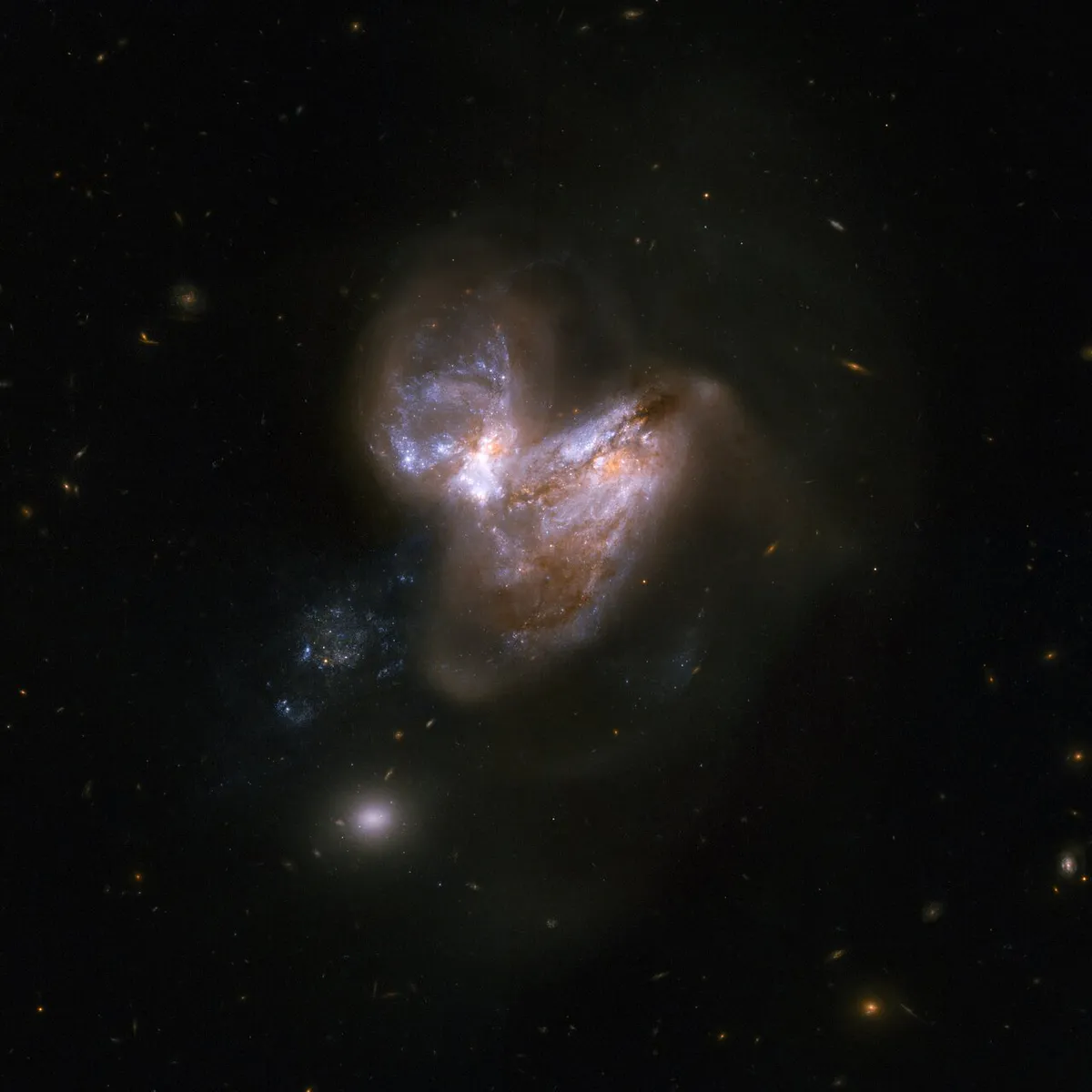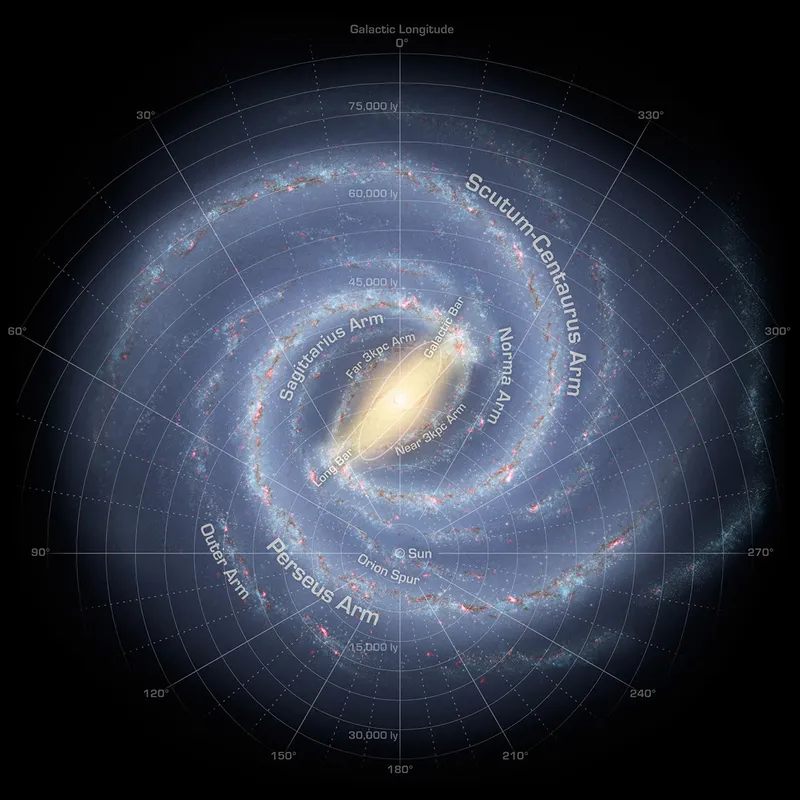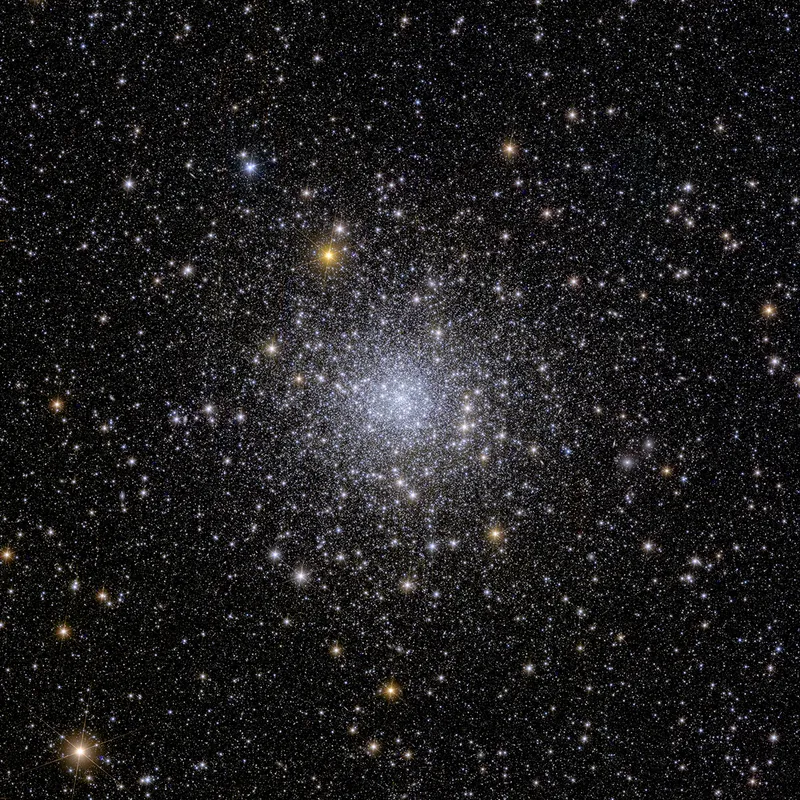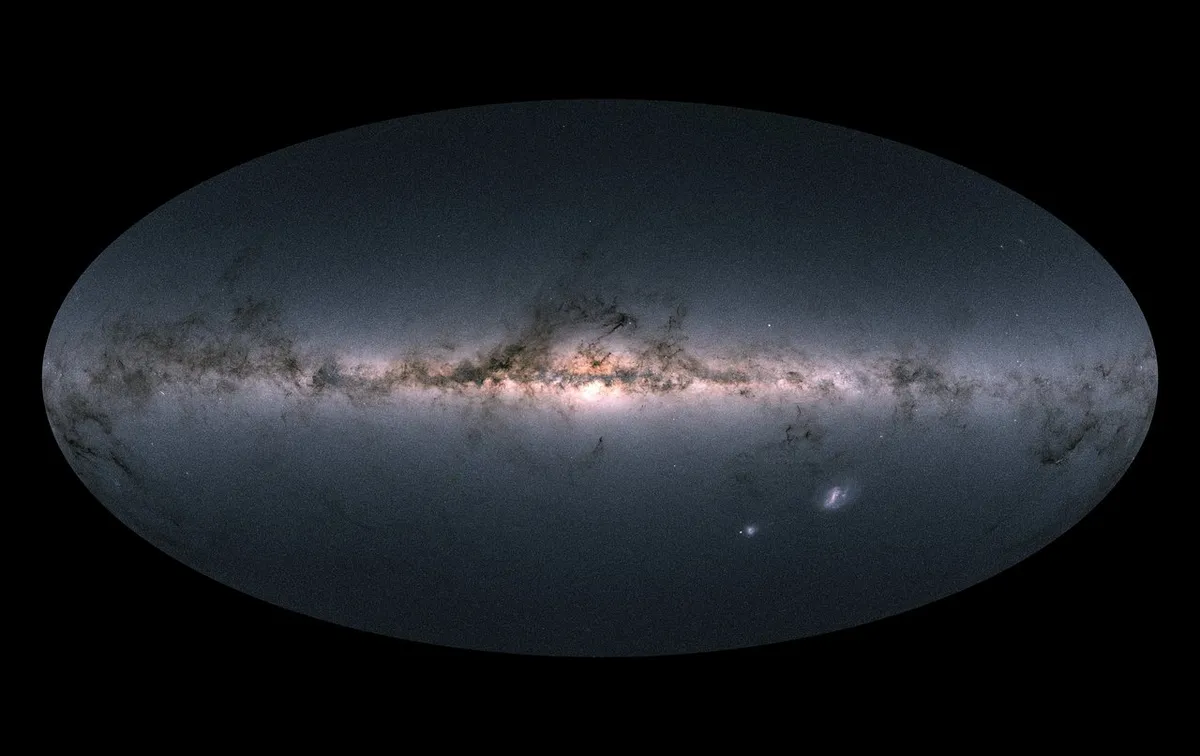Our Milky Way galaxy is estimated to be 13.6 billion years old, but how do astronomers calculate how old it is?
Before we can answer how old our Galaxy – the Milky Way – is, we first have to decide when it began.
Like most other large galaxies, the Milky Way grew from several smaller galaxies merging together, meaning that different parts of it have different ages.

Structure of our Milky Way galaxy
The Milky Way galaxy has several main components.
There is a densely packed region, called the central bulge, that spans 10,000 lightyears and is filled with stars
This is home to our Galaxy’s central black hole, Sagittarius A*.
Extending from this are several spiral arms, curving through a disc of stars.
There is a 1,000-lightyear-deep ‘thin disc’ of young stars, surrounded by an 8,500-lightyear-deep ‘thick disc’ filled with older stars.
Surrounding all of this is a halo with a sparse scattering of stars and globular clusters.

Determining the birth of the Milky Way galaxy
Globular clusters are known to contain some of the oldest stars in the Universe.
Those surrounding our Milky Way appear to have formed when the first stars were beginning to shine in the Universe, around 300 million years after the Big Bang.
This is when the first pieces of the Milky Way began to appear.
Measuring the ages of stars in the disc is trickier, as astronomers need to find suitable stellar targets right across the disc.

One team did this in 2022 by looking for sub-giant stars – those just on the cusp of becoming red giants.
This era of a star’s life only lasts a short time, making it a very accurate measure of their age.
It also means they are rare, as there’s only a short timeframe you can catch them.
Fortunately, the Gaia spacecraft has spent more than a decade measuring over a billion stars in the Milky Way.
Scouring this huge catalogue, the team were able to track down 250,000 sub-giant stars and discover their ages.
These reveal that the thick disc formed at around the same time as the halo.

The thin disc, meanwhile, has a more complex history.
Though there is a scattering of stars from those early days, most appear to be at least two billion years younger.
The secret behind this flush of new growth could lie with several of the stars that appear to have a different composition to most of the stars in the Milky Way.
These are thought to have been born in a different galaxy, called Gaia-Enceladus, which collided with our own, leading to the Milky Way as we know it now.
The influx of gas sparked a furious burst of star formation, which lasted until about six billion years ago.
This article appeared in the April 2024 issue of BBC Sky at Night Magazine.
